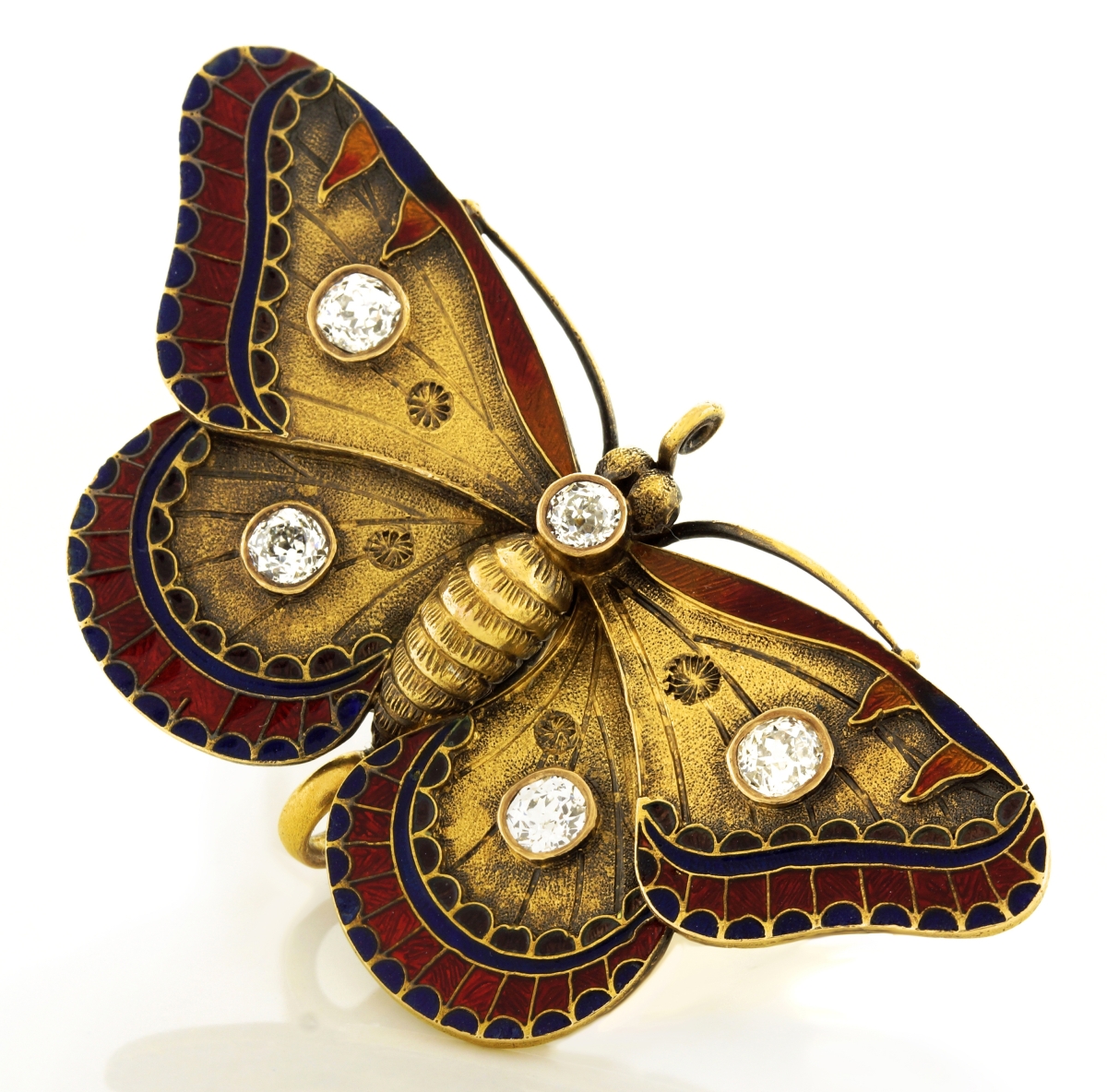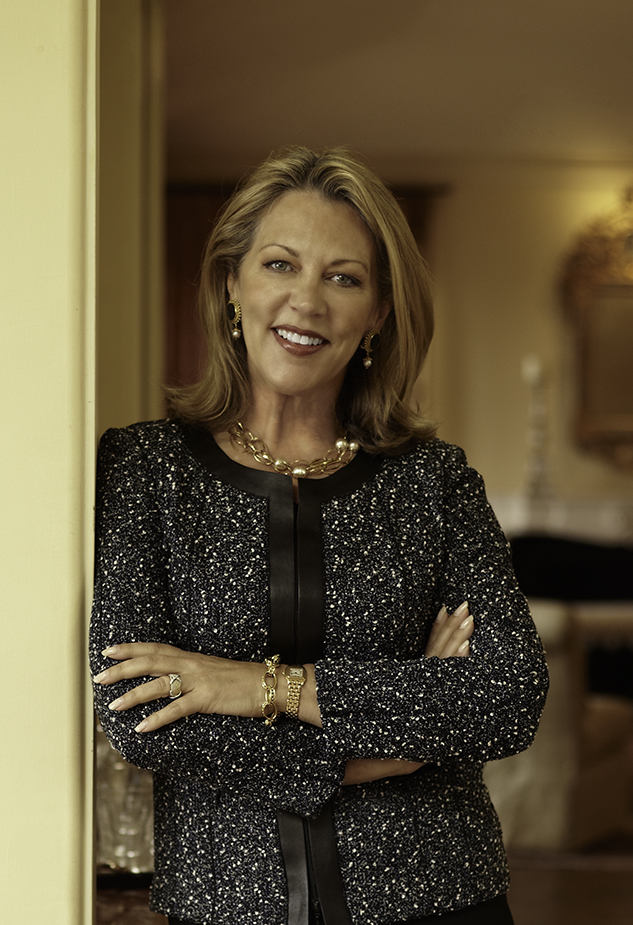Suzanne Tucker is a leading interior designer, known for her timeless style, elegant interiors and passion for architecture and the decorative arts. Architectural Digest has honored her repeatedly on its list of top designers. Having worked under the legendary Michael Taylor and often referenced as his protégée, she and her husband/partner, Timothy F. Marks, founded Tucker & Marks in 1986. Her first monograph, Rooms to Remember, The Classic Interiors of Suzanne Tucker (Monacelli Press, 2009) was followed by the publication of Suzanne Tucker Interiors — The Romance of Design (Monacelli Press, 2013). She serves as chair of the 35th annual San Francisco Fall Art & Antiques Show, which runs October 27–30.
How/when did you first get involved with antiques? And with the San Francisco Art & Antiques Show?
I grew up in Santa Barbara exploring a rather privileged playground, able to roam freely through properties with romantic names such as El Mirador, Lotusland, Val Verde, Constancia and Bellagio to name a few. As magical as the gardens were to me, I was equally enchanted by the houses and interiors. My parents had antique pieces as did everyone else — it was just what you had. But my eyes were opened when Sotheby’s held a three-day estate auction at the Armour property next to us. I sat in the bleachers noting in the catalog what everything sold for and I think it was that experience as a teenager that made me become a lifelong collector. It made me realize that one should always have at least one piece with some age in a room. It does not have to be over-the-top expensive, but antiques resonate with history’s silent voices. The appeal resides in a patina only achievable with time: their very imperfections speak to me of soul and character and life lived.
My long-term involvement with the San Francisco Fall Antiques Show has continually fueled this passion and provided an ongoing education in the fascinating field of vintage, antiques and collectables. The late Michael Taylor took me to the very first show and I’ve missed only one in 35 years!
What inspired you to choose Animalia as this year’s show theme?
The Animalia theme has been in the cooker for a while — it is fanciful, and playful, chic and timeless — and includes the kingdom of all animals. Of course it is a subject that has been interpreted in just about every discipline, technique and material throughout time, but it’s also relatable to everyone — modern and traditional, antiquities to contemporary. Mankind has always been fascinated with the beauty and mystery of the animal kingdom, creating symbolism and meaning, and the Latin word animalis literally means “having soul.” I love that because at the heart of all art, antiques and decorative objects is a boundless, collective soul — that of the artist, the craftsman, the collector, the observer and the history of the piece.

This circa 1890s American antique diamond and enamel butterfly brooch, 14K gold, is a fine example of American Art Nouveau jewelry. Glowing enamel and bright white diamonds adorn the textured gold wings of this naturalistic pin. Butterfly brooches have a transcendent style perfect in 1890 and breezily chic today. Courtesy Lawrence Jeffrey Estate Jewelers.
What are some of the most interesting and meaningful examples of how dealers have embraced this theme?
There will so many gorgeous examples and interpretations of this idea at the show: from a bird-shaped aluminum table by Francois Xavier Lalanne (Lebreton Gallery) to a delicate Nineteenth Century enamel butterfly brooch (Jeffrey Lawrence Estate Jewelry), from a chic Art Deco lacquered screen (Epoca) to a spectacular elephant photography by Sebastião Salgado (Peter Fetterman Gallery). I’ve also had an eye on the fall fashion collections and there is a fabulous plethora of animal prints, motifs and themes so what to wear on opening night should be easy!
In your interior design work, what is your approach to blending antiques, decorative arts and textiles?
The rigid rules are gone — thank goodness! I love the mix, so I would say never to be afraid of putting a piece of great value next to a flea market find. Regardless of style or era, the scale and proportion of furniture is always the most important thing in a room. Does it fit? Does it look out of place? Look at the lines, study the bones… If it speaks to you, buy it! Live with it and love it, don’t forget to feed it with a good wax and pass it onto the next lucky person.
In the end, what really makes a room sing is a personal approach to furnishing and art that reflects who lives there.
You’ve traveled extensively. What’s the most interesting place you’ve gone to and what was special about it?
Last June, my senior designers and I joined the Institute of Classical Architecture & Art on a weeklong tour of Scotland. We visited some of the finest examples of Palladian and Adam-style buildings and homes in Scotland, including Georgian House (1796), The Register House (1774–1789) and The Royal Exchange (1753–1754) in Edinburgh, as well as Hopetoun House, Dumfries House, Mellerstain, Floors Castle, Arniston, Manderston and more… It was an unforgettable and inspiring experience — I came back with a mental suitcase full of ideas and a camera loaded with images.
Looking forward, what trends do you see being big in antiques collecting and design?
I don’t really believe in trends. Trends are for fashion — here today, gone tomorrow…. Good design is always timeless. The pendulum has swung toward greater individuality, abandoning the “right” and “wrong” which is a good thing. I think that is here to stay.
Tell us something about yourself that not many people know.
In the late 70s, I managed the Yves Saint Laurent and Rive Gauche boutique at I. Magnin in Beverly Hills, such a glamorous and decadent time to be in fashion.
—Andrea Valluzzo





